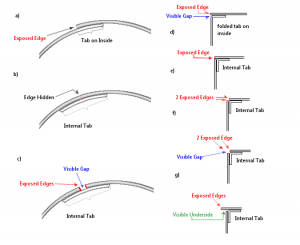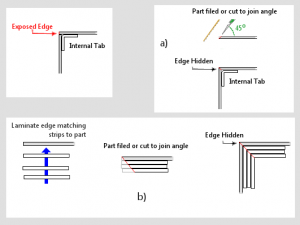Hi,
I keep repeating myself when I say I'm a newbie and started on this hobby a couple of months ago, but I just want to emphathize my (low) level of expertise. And I don't know if this is the right place for this thread, but it looks as though it is.
Well, cutting to the chase: tabs are a newbie's "best friend", since they help a lot to assemble the model. But, IMHO, they make a "step" between the edges of the pieces they connect, and it really doesn't look so good.
Eliminating the tabs is not so easy for me right now; I've been reading posts about double-faced tapes and pieces of paper on the inside, and even rolled pieces of paper to glue the top of a cylinder (now THAT'S GOOD!:thumb . Problem is: what if you have a piece to glue on a closed part, and nothing of that applies, e.g. a large piece that closes something else (let's say, the bottom of a display stand, like the one shown on http://www.zealot.com/forum/showpost.php?p=959817&postcount=37)? It's round, it's big, and it's not easy to apply double-faced tape, because of its round shape.
. Problem is: what if you have a piece to glue on a closed part, and nothing of that applies, e.g. a large piece that closes something else (let's say, the bottom of a display stand, like the one shown on http://www.zealot.com/forum/showpost.php?p=959817&postcount=37)? It's round, it's big, and it's not easy to apply double-faced tape, because of its round shape.
I'm sorry to make you see my thread, I just wanted to give you an example. Sorry that you had to see this.
Comments, please?
I keep repeating myself when I say I'm a newbie and started on this hobby a couple of months ago, but I just want to emphathize my (low) level of expertise. And I don't know if this is the right place for this thread, but it looks as though it is.
Well, cutting to the chase: tabs are a newbie's "best friend", since they help a lot to assemble the model. But, IMHO, they make a "step" between the edges of the pieces they connect, and it really doesn't look so good.
Eliminating the tabs is not so easy for me right now; I've been reading posts about double-faced tapes and pieces of paper on the inside, and even rolled pieces of paper to glue the top of a cylinder (now THAT'S GOOD!:thumb
I'm sorry to make you see my thread, I just wanted to give you an example. Sorry that you had to see this.
Comments, please?




